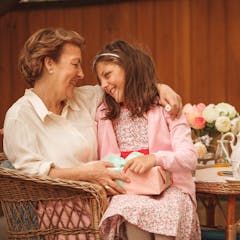
Articles on Health communication
Displaying 1 - 20 of 33 articles

In rural Ghana, only 18% of patients believe elephantiasis is a disease. Some others think it is caused by curses or even rain. Only by understanding local beliefs can it be treated effectively.

If people rely on ChatGPT or Google for complex medical questions, they could come unstuck.

Doctors don’t always tell you they’re unsure what’s behind common symptoms, such as a stomach ache. And that can have serious effects.

People want a simple answer. Is this action safe? But despite Anthony Fauci bouncing responsibility for COVID-19 risk assessment to individuals, your risk can’t be boiled down to one probability.

Social media platforms can be used to share critically important information about disaster management.

People often try to seem confident and certain in their message so it will be trusted and acted upon. But when information is in flux, research suggests you should be open about what you don’t know.

The COVID-19 pandemic is a stressful time for all, and even more so for people experiencing trauma-related stress. How can public health emergency responses avoid further trauma for vulnerable people?

After what feels like a never-ending 18 months of lockdowns and COVID-19 saturated government messages, we’re all just a bit over it.

Our research shows we are still missing clear and consistent communication about COVID vaccines all Australians can understand and act on.

When a crisis like COVID-19 disrupts expectations for the future, it also disrupts how health messaging works. Advertising research shows three ways that health campaigns can succeed in a crisis.

Our well-meaning efforts to use images to help demystify the vaccination process or share our pride in getting a COVID vaccine can backfire.

Health professionals should carefully consider the terms they use to avoid needless anxiety and unnecessary surgeries.

Women, particularly those of childbearing age, were more likely to be unsure about getting vaccinated.

The campaign shows promise. But it’s not clear if it will preempt and respond to people’s concern about vaccine safety.

Budget cuts and outsourcing content have affected the amount and quality of science journalism. Scientists should learn to communicate their own findings directly and clearly to the public.

The government should used trusted spokespeople, tailor information so it can be understood by different groups, acknowledge people’s concerns, be transparent, and seek public feedback along the way.

It might be tempting to yell ‘bloody well wear a mask’, but that will probably make little difference. Research shows there are more constructive ways to get your message across.

Not all government coronavirus health advice is reaching people who speak a language other than English. That’s about one in five households.

There’s growing awareness about health disparities, and environmental factors need to be considered when communicating public health messages.

Produced during a crisis, an emerging collection of books talk to kids about coronavirus.
